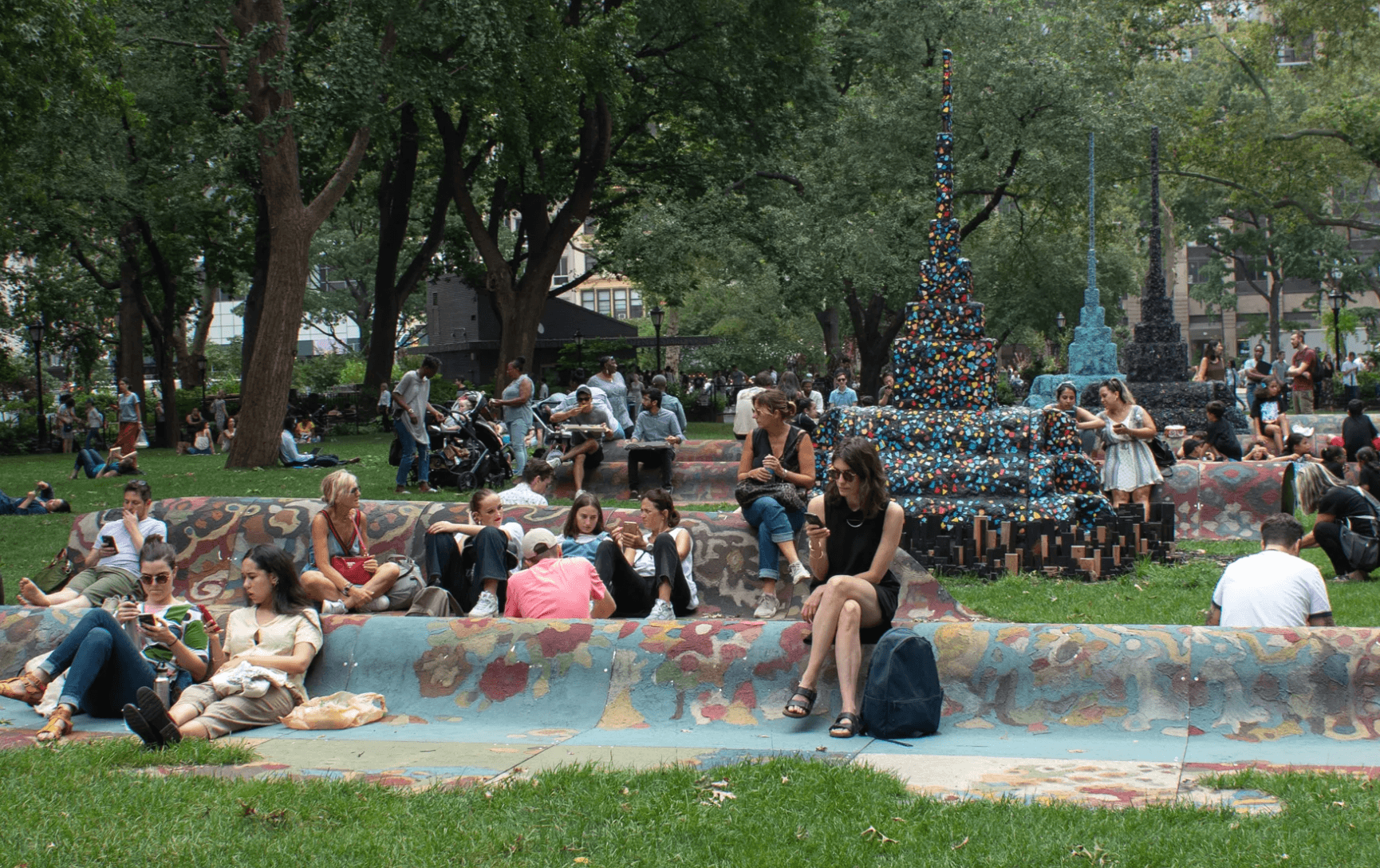This site uses cookies – Learn more.
The Flexibility of Public Space
The Flexibility of Public Space

Over the past months of pandemic, protest, and political turmoil, Madison Square Park Conservancy has witnessed the adaptability of public space. Families, neighbors, workers, artists, students, athletes, protesters, and travelers have all come to this site and found open space suitable, even essential, to their needs. Many communities experience the park’s flourishing gardens, tended across all seasons; its clean and safe walkways, maintained by a skilled Operations team; and the open lawns that welcome visitors. If Madison Square Park was a site for personal leisure before the pandemic, now it is also a work space for outdoor meetings of all kinds. Park goers have gathered here prior to Black Lives Matter and other activist events. Small groups practicing athletic training and meditation meet regularly in sections of the park. As the park has affirmed its versatility, the commissioned works of public art proclaim a fundamental need for creativity in a civil society.
Works of art can help us interpret unfathomable aspects of the human experience or make sense of them. And like those park goers whose goals for civic space are manifold, the works of art on view in the park demonstrate the polyphony of contemporary art. The Conservancy’s public art program presents a range of work made by a diversity of artists with a variety of materials and meaning, scale and placement, concept and vision. Leonardo Drew’s City in the Grass, on view in 2019, was a richly textured, vibrantly colorful undulating carpet on the Oval Lawn, a gathering place within the oasis of the park. Park goers located themselves within the rolling plains of the hundred-foot-long sculpture. City in the Grass has since traveled to the North Carolina Museum of Art in Raleigh, the Mississippi Museum of Art in Jackson, and the Wadsworth Atheneum Museum of Art in Hartford. With the tour, new communities have experienced Drew’s symbol of convening.
When New Yorkers began the harrowing period of the first dark days of the pandemic, Krzysztof Wodiczko’s Monument video was being shown; it remained on view through May 2020. Wodiczko collaborated with twelve refugees, resettled in the United States, and projected their filmed likenesses and spoken narratives onto the park’s 1881 historic monument to Admiral David Glasgow Farragut. Wodiczko chose the Farragut location to underline how select individuals are lionized in wartime while others are overlooked.
A response to history and the present, Abigail DeVille’s luminous Light of Freedom opened in October 2020 to reflect the despair and the disruption of the pandemic. DeVille answered the question of how public art can respond to a turbulent political period. Light of Freedom traveled to the Momentary at Crystal Bridges Museum of American Art in Bentonville, Arkansas, and remains on view through April 17, 2022 outdoors at the Hirshhorn Museum and Sculpture Garden in Washington, D.C. In Maya Lin’s Ghost Forest, closed on November 14. Dozens of stark and skeletal Atlantic white cedar trees, sourced from a dying forest in the Pine Barrens of New Jersey, arrested viewers with their beauty and serve as physical stand-ins for the ravages of climate change. Through a collaboration with two nonprofits, Tri-Lox in Brooklyn and Rocking the Boat in the Bronx, the milled trees will now be used for boat building by high school students in the Hunts Point neighborhood.
Temporary outdoor sculpture presents opportunities for vibrant dialogue around aesthetic, political, and social questions in our culture. Public art is a community activity where the private act of looking converges with public habit and ritual. Our need for civic space has only heightened over the past eighteen months, confirming the critical role of parks. What will be the continued conversation in the face of the overwhelming, immediate demand for public space? Going forward, heed the artists and their works as guideposts pointing the way.



